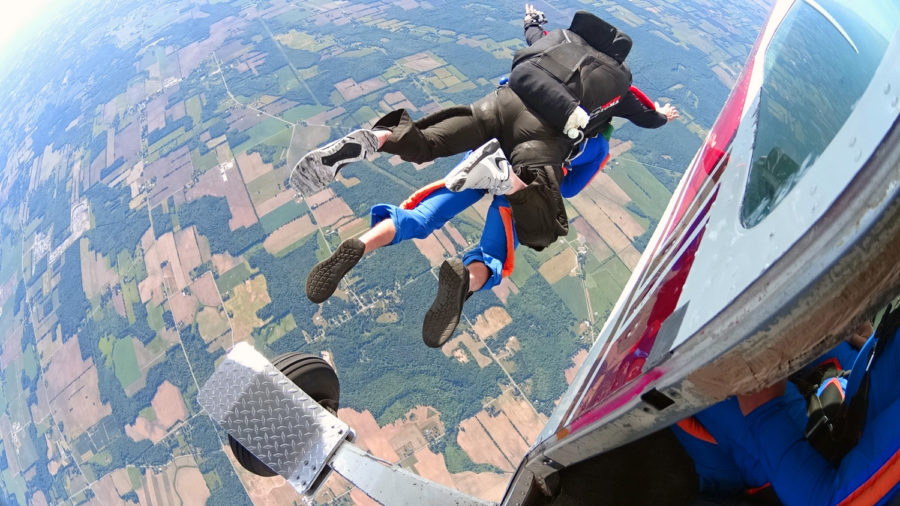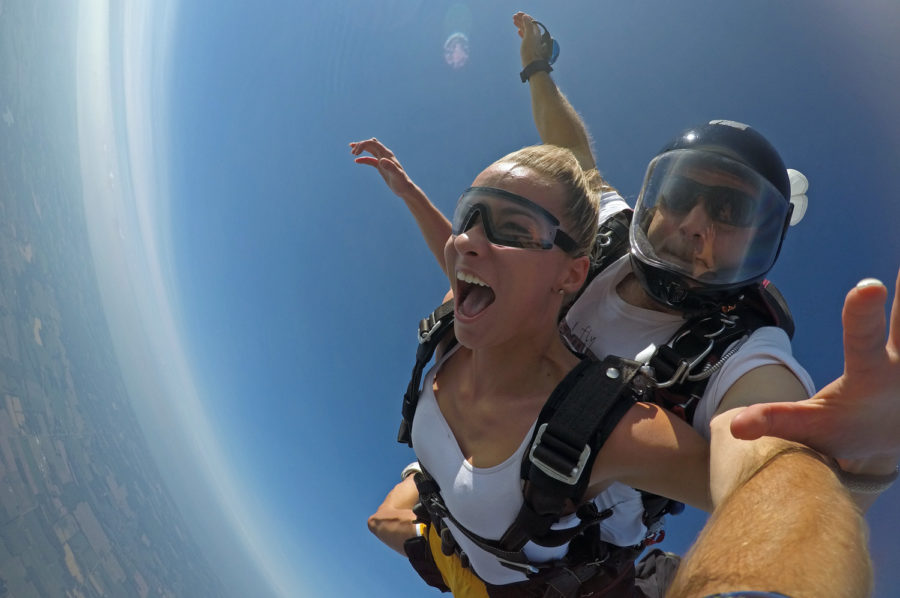We realized something recently: we haven’t yet pontificated about the topic of skydiving freefall! It feels like such an oopsie that we don’t have a single article that talks about this at length, because — particularly for first time tandem jumpers — this is a topic of considerable curiosity and anxiety. So, without further ado: let’s talk about it!

How Fast Do You Go in Skydiving Freefall?
It’s all relative, dude. While most tandem skydiving pairs typically freefall at 120 miles an hour, you can expect your personal skydiving freefall speed to relate to a variety of factors. They are:
- your weight
- the combined weight of your instructor and equipment
- your body’s position relative to the ground
- the altitude of the dropzone
- and — weirdly — even the air temperature and humidity (though not noticeably, in the last case)
How Does Freefall Feel?
If falling at 120 miles an hour sounds like a recipe for a dropped stomach, don’t worry one bit about it. There’s no bungee-jump, roller-coaster WHOA involved. In fact, you won’t feel like you’re falling. You’ll get right out of the plane into a supportive “relative wind” that takes that feeling away. And before you know it, you’ll be at terminal velocity, which is the fastest speed you’ll clock in skydiving freefall.

Once your descent rate reaches terminal velocity, you’ll have the ineffable sensation of being fully cushioned by the sky. Sounds crazy, but it’s true. Skydiving freefall It doesn’t feel fast. It feels like floating; like flying. It feels like freedom.
Can you hear anything (or even talk) while freefalling?
You sure can hear the wind… but nope on the fireside chat. It’s far too loud up in skydiving freefall to talk. It’d be like trying to have a car-to-car conversation on an F1 track. Once your parachute deploys and you’re floating “under canopy,” the wind slows down and you’ll be able to talk to your tandem instructor.
How Long Does Freefall Last?
If you’re extra-nerdy (like, well, us) you might enjoy playing around with a skydiving freefall time calculator. It’ll help you see how the various variables in a skydive affect the amount of time you’re in freefall. There’s a nifty one right here. It’s a British one, so you should probably go make yourself a nice cup of tea before you start in with it. (Good shout, mate! That’s mint.)
How Do I Get Me Some of That Skydiving Freefall?
We’re so glad you asked! The most popular way for a new skydiver to experience freefall for themselves is as a tandem skydiving student. On a tandem skydive, you’ll make a jump attached to a highly experienced, totes awesome instructor. That instructor will coach you through the (simple) process of getting ready, teach you some fun tips and tricks, and how to operate the skydiving equipment. You’ll be able to have all the fun of freefall without the stress (though the butterflies will certainly power up, bless ‘em).
Honestly, the only way to find out more about tandem skydiving freefall by trying it out for yourself! Make your reservation today. We can’t wait to be there for you.





